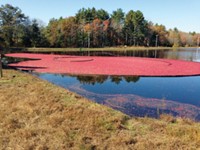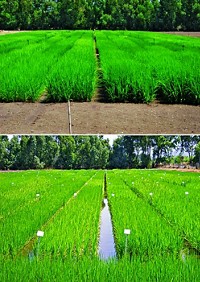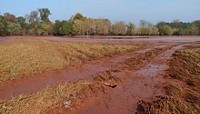Advertisement
Grab your lab coat. Let's get started
Welcome!
Welcome!
Create an account below to get 6 C&EN articles per month, receive newsletters and more - all free.
It seems this is your first time logging in online. Please enter the following information to continue.
As an ACS member you automatically get access to this site. All we need is few more details to create your reading experience.
Not you? Sign in with a different account.
Not you? Sign in with a different account.
ERROR 1
ERROR 1
ERROR 2
ERROR 2
ERROR 2
ERROR 2
ERROR 2
Password and Confirm password must match.
If you have an ACS member number, please enter it here so we can link this account to your membership. (optional)
ERROR 2
ACS values your privacy. By submitting your information, you are gaining access to C&EN and subscribing to our weekly newsletter. We use the information you provide to make your reading experience better, and we will never sell your data to third party members.
Environment
Hungary's Red Mud Catastrophe Packs A Punch On Plants
Industrial Accident: Sodium salt, more than heavy metals, from the bauxite reservoir spill may hurt crops
by Sarah Everts
January 11, 2011
| A version of this story appeared in
Volume 89, Issue 3

The toxic red mud that spilled from an alumina tailings reservoir into the Hungarian countryside last October could make the soil too salty for plants to grow, according to a new report (Environ. Sci. Technol. DOI: 10.1021/es104000m).
Researchers led by Erik Smolders, an earth scientist at the Catholic University in Leuven, Belgium, went to Hungary after the accident to collect samples of the red mud soil, which they then used to grow barley plants in the lab.
The spill, which killed 10 people, is considered one of the country's worst environmental catastrophes to date. The 700,000 cubic meters of red mud that poured over 40 square kilometers of the Hungarian landscape had an initial pH of 13, with radiation levels 10 times higher than background and contained toxic trace metals.
"People were very afraid because red mud contains toxic trace elements such as arsenic, chromium, cadmium, nickel and radioactive elements," Smolders says. "Our work demonstrates that trace metals and radioactivity are not a concern for growing plants.
"But it's not all good news," he continues. The team found that the barley plants grew slowly in the lab: Compared to crops grown in untainted soil, plants' shoot yield dropped by 25% when red mud concentrations in the soil reached about 5% and above. The researchers also grew barley plants in soil tainted only with sodium hydroxide, a caustic agent in red mud which increases soil salt concentrations as the NaOH degrades. The NaOH-spiked soil slowed the growth of barley plants as much as the Hungarian red mud did, Smolders says. The team also found that the red mud boosted levels of copper, chromium, iron and nickel concentrations in barley shoots, but did not make them exceed toxic levels. "Sodium salinity, not trace metal contamination, is the main concern," he says.
There is a way to remediate contaminated soil, Smolders says. Clean-up crews have added gypsum on top of the red mud to decrease the contaminated soil's pH and accelerate removal of the sodium, he says. Gypsum, a mineral composed of calcium sulfate dehydrate, acts as an antidote for two reasons: First, gypsum induces calcite precipitation, he says, thereby accelerating carbonation of the soil from air, and reducing the pH. And second, calcium ions replace the over-abundance of sodium ions in the soil, which improves the soil's porosity and allows rain to flush away the salt.
The new work is a "rigorous, laboratory-based study," comments Karen Hudson-Edwards, an environmental geochemist and mineralogist at the University of London, Birkbeck. She agrees that for optimum crop growth, salinity should be decreased, and that gypsum could be a good remedy. But she cautions that adding too much gypsum could increase soil sulfate levels and disrupt the soil's geochemical balance. Hudson-Edwards also is "not convinced" that heavy metal contamination of the soil can be entirely ruled out as a possible problem, because red mud is heterogeneous. As a result, the team's samples may not wholly represent the area's heavy metal contamination. Also changing soil conditions, such as water logging, may lead to release of metals to crops over time. She and the researchers agree that to validate the paper's conclusions, scientists must monitor plant growth and metal uptake in the field.





Join the conversation
Contact the reporter
Submit a Letter to the Editor for publication
Engage with us on Twitter